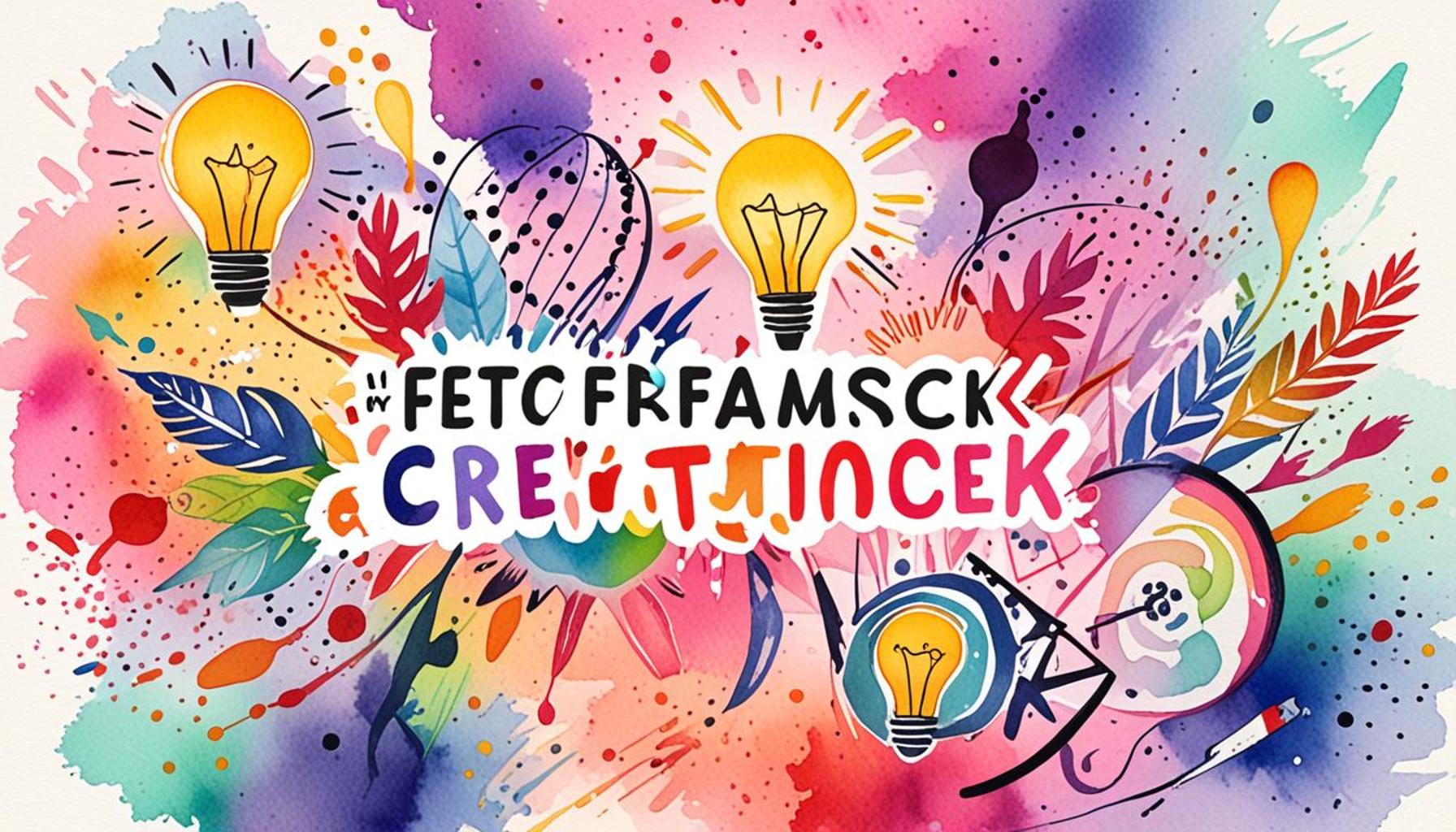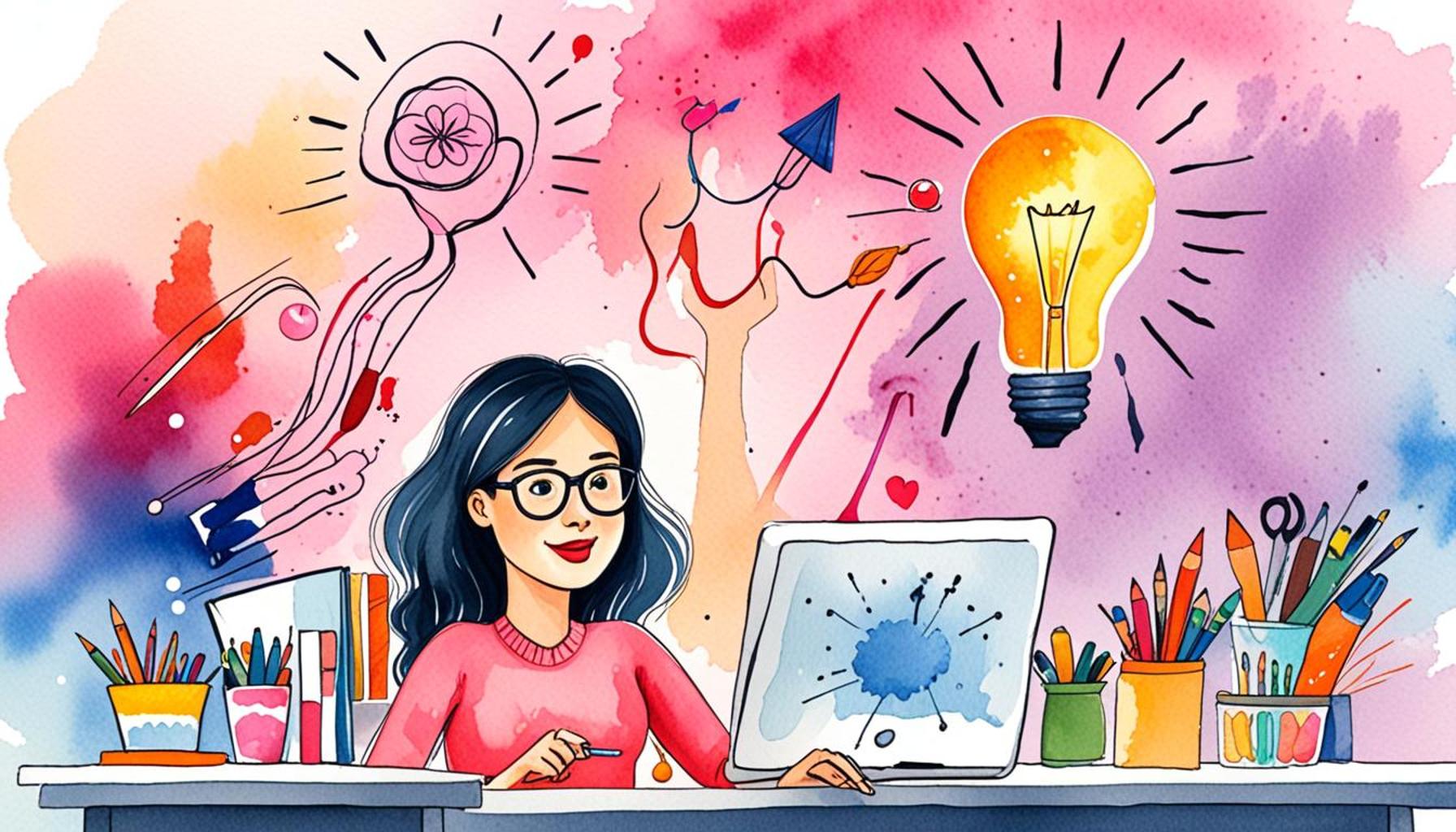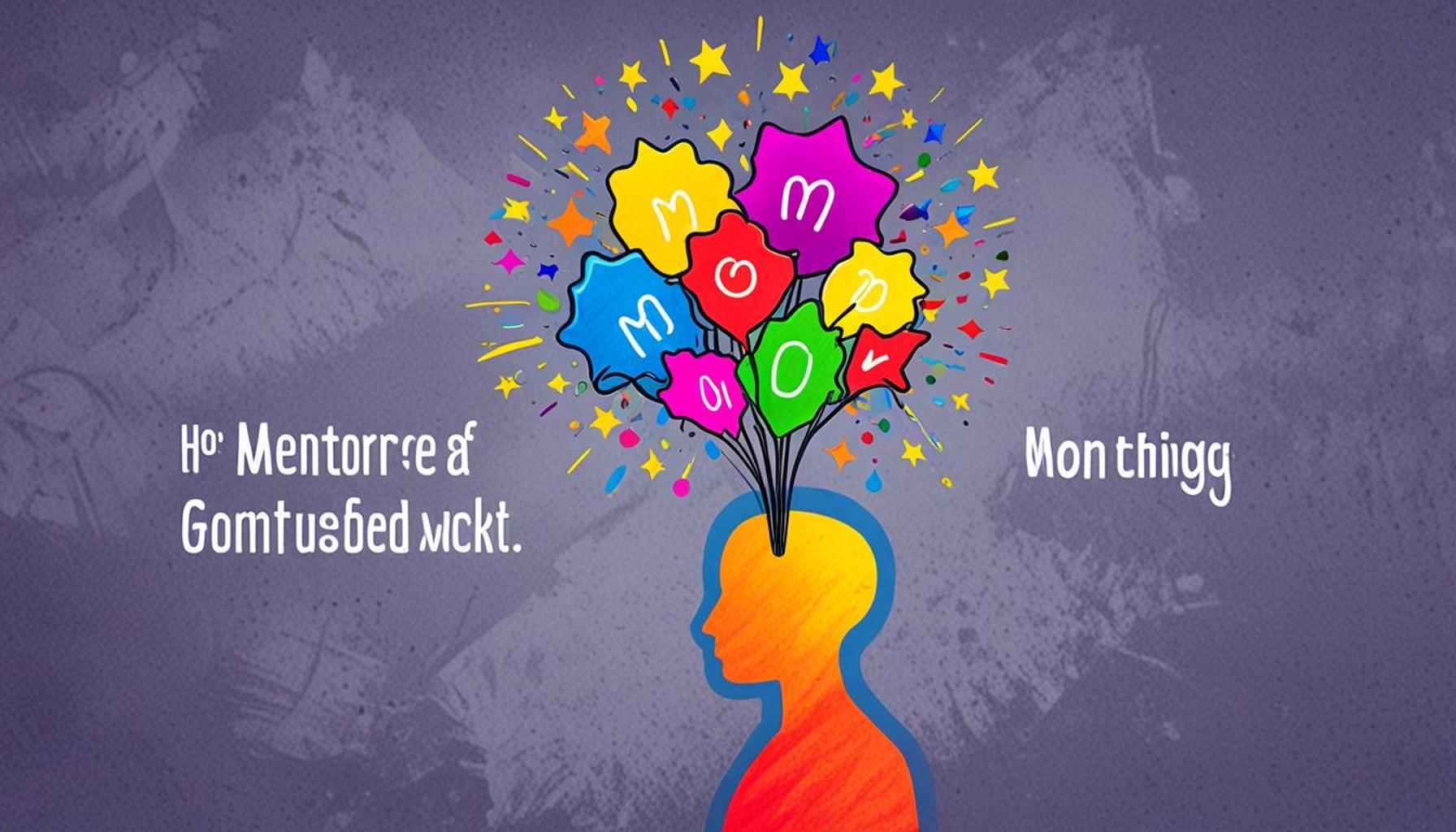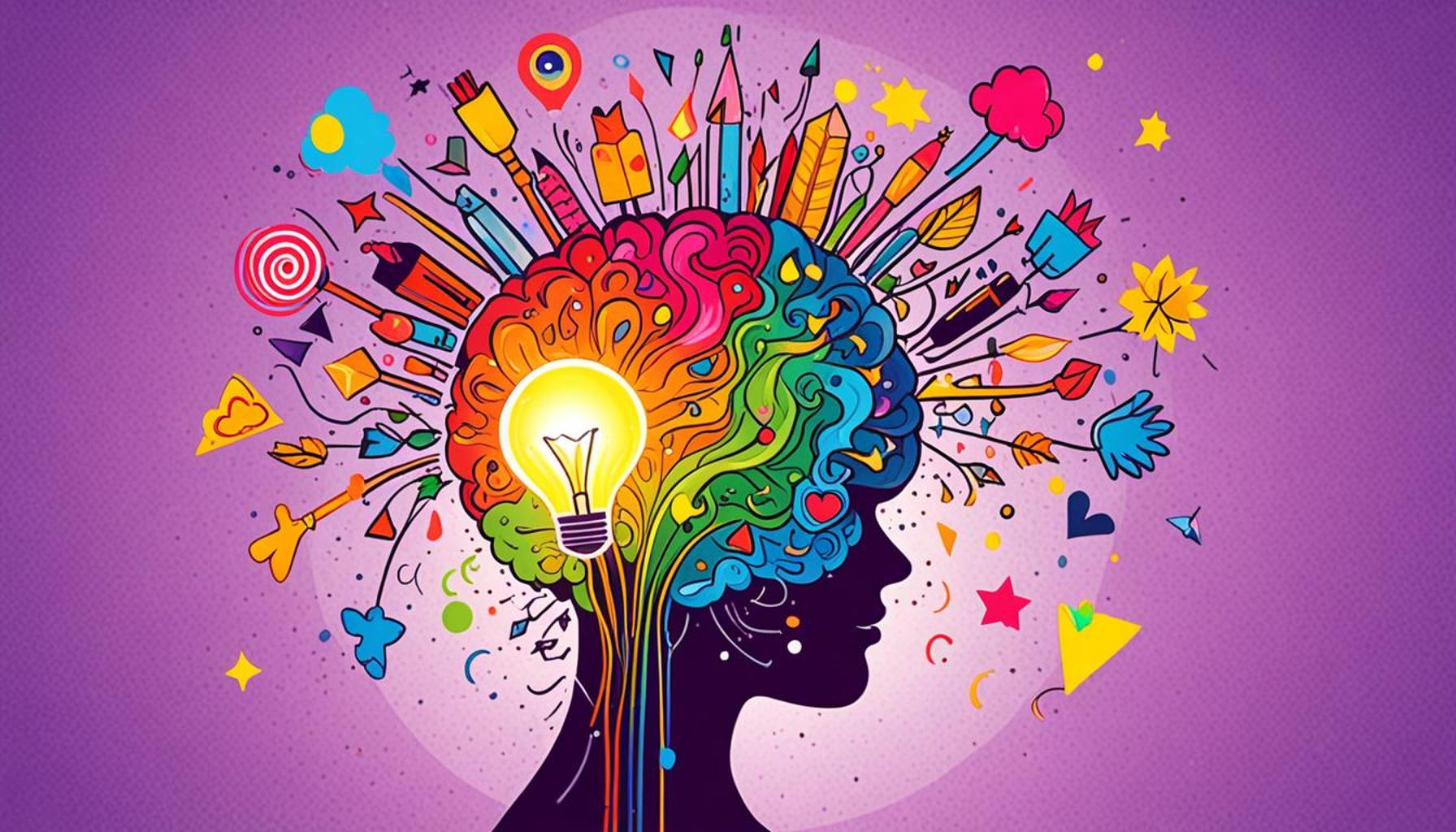How Feedback Can Foster Creativity in Work Environments

The Importance of Feedback in Nourishing Innovation
Within the vibrant and dynamic workplaces of Nigeria, the influence of feedback is far-reaching and multifaceted. It acts as a vital energizer for both performance enhancement and the creative processes within teams. When articulated well, feedback becomes more than just a mechanism for performance appraisal; it turns into a powerful driver of innovation and original solutions.
Key Elements of Effective Feedback
Feedback’s efficacy hinges on several critical components that uplift both individual and collective performance. Here’s a deeper dive into these aspects:
- Constructive Critique: This type of feedback helps individuals identify their strengths and areas needing improvement. For example, a graphic designer might receive feedback on color choices and layout from peers, encouraging them to refine their visual storytelling skills.
- Open Dialogue: Encouraging conversations where different viewpoints are welcomed creates a melting pot of ideas. In a Nigerian context, where team settings may vary from formal meetings to informal discussions over traditional meals, such open communication can lead to a richness of ideas and solutions.
- Empowerment: Recognizing the contributions of team members promotes a sense of belonging. When an employee’s effort in leading a project is acknowledged, it not only boosts morale but also encourages them to contribute more creatively in future tasks.
Collaboration as a Foundation
In Nigeria, where teamwork is often seen as a fundamental pillar for achieving goals, nurturing an environment where feedback is viewed as a constructive tool can result in extraordinary achievements. Companies that integrate feedback into their operational ethos often see significant improvements in team cohesion and problem-solving capacities. For instance, a tech startup encouraging peer reviews for code can foster both accountability and innovative solutions amongst developers.
Cultural Relevance in Feedback Mechanisms
As work environments continuously evolve, understanding how to craft feedback strategies that resonate with Nigeria’s diverse cultural fabric is crucial. It’s important to recognize the layers of traditional ethos that players in various sectors face when attempting to implement these strategies. Organizations can harness feedback cultures unique to their demographic by contextualizing the feedback process—turning it into a mutual growth path rather than a one-sided interrogation.
Understanding and Implementing Feedback
To unlock the full creative potential of your workforce, consider how these principles of feedback could be effectively integrated into your organization. It prompts leaders and team members alike to explore new dimensions of collaboration and creativity. The fusion of constructive dialogue, cultural sensitivity, and empowerment can drive your team toward unparalleled innovation and success.
CHECK OUT: Click here to explore more
Nurturing a Culture of Learning Through Feedback
In the fast-paced and ever-evolving landscape of Nigerian workplaces, creating a culture where feedback is not only welcomed but actively sought after can be instrumental in unlocking creativity. Embracing feedback as a catalyst for development cultivates a learning mindset among team members, allowing them to approach challenges with curiosity rather than fear. Feedback becomes a tool that transforms ideas, ignites innovation, and lays the groundwork for creative breakthroughs.
The Cycle of Improvement
At the heart of fostering creativity lies the cycle of improvement, wherein feedback plays a critical role in both personal and organizational growth. This cycle consists of several stages that can reinforce and magnify the creative output of a team:
- Initiation: The beginning of the cycle is marked by idea-sharing, where individuals present their concepts without fear of judgment. Encouraging team members to propose bold ideas can lead to unique perspectives.
- Feedback Collection: Gathering diverse opinions on the ideas presented allows for a comprehensive understanding of their potential. This can be achieved through structured feedback sessions or casual brainstorming meetings, enhancing the collaborative spirit.
- Iteration: With insights garnered from feedback, individuals are empowered to refine their concepts. For example, a marketing team in Nigeria might iterate on a campaign strategy based on peer evaluations, resulting in a more resonant message.
- Implementation: The finalized ideas become executable plans, yet the feedback loop continues, with teams remaining open to adjusting strategies based on initial outcomes.
Leveraging Diverse Perspectives
In a nation rich in cultural diversity, the synergy of ideas can be amplified manifold. Nigerian workplaces benefit significantly from the blending of perspectives when offering and receiving feedback. Recognizing that every voice matters fosters an environment where creativity flourishes. Coworkers from various backgrounds can challenge the status quo, helping to identify gaps in ideas while also sparking new and innovative solutions.
Creating Safe Spaces for Expression
For feedback to truly nurture creativity, organizations must create safe spaces where employees feel comfortable expressing themselves without the specter of negative repercussions. Leaders should encourage an atmosphere of respect and openness, emphasizing that feedback is a tool for growth rather than criticism. This psychological safety allows team members to share unconventional ideas and take risks, ultimately fueling the creative process further.
Feedback in Action
Employing feedback strategies effectively can yield remarkable results in creativity. This involves not just formal reviews but also informal channels of communication like team huddles or suggestion boxes. Such platforms allow for continuous dialogue, where ideas evolve dynamically. As organizations in Nigeria are consistently seeking innovation to compete in a global market, leaning into feedback mechanisms can help them remain agile and creative.
Exploring the Role of Feedback in Enhancing Creativity
The dynamic exchange of ideas sparked by constructive feedback is instrumental in creating a culture of creativity within work environments. When team members feel safe to express their opinions, free from fear of judgment, a rich tapestry of collaboration emerges. Employers should recognize that fostering this sense of security is crucial; it encourages employees to share innovative ideas and diverse perspectives that can lead to groundbreaking solutions. Furthermore, a well-structured feedback process can illuminate hidden talents and strengths among team members. For instance, regular feedback sessions can unearth individuals’ unique skills that may often go unnoticed in day-to-day operations. By highlighting these attributes, organizations can better align roles with employees’ passions, ultimately enhancing job satisfaction and creativity.Additionally, feedback serves as a powerful motivator. When employees receive acknowledgment for their contributions, it reinforces their commitment to the organization’s goals and inspires them to pursue even more creative solutions. This practice not only nurtures talent but also drives overall productivity and performance. Creating feedback loops that incorporate peer reviews can also amplify creativity. When colleagues collaborate, their differing viewpoints can stimulate thought and inspire new ideas. This process often leads to innovative approaches that would not have emerged in isolation. A culture that embraces feedback not only cultivates creativity but also builds strong interpersonal relationships among team members.To ensure that feedback is effective, it must be timely and relevant. Waiting too long to provide input can diminish its impact, causing employees to feel disconnected from their contributions. Instead, organizations should strive for a continuous feedback mechanism, maintaining open lines of communication that energize the creative process. In conclusion, feedback is not simply a tool for evaluation; it is a vital element in crafting a stimulating and innovative work environment. By leveraging the power of feedback effectively, organizations can unlock the full potential of their teams, setting the stage for remarkable creativity and ingenuity.
| Creative Empowerment | Benefits of Open Feedback Culture |
|---|---|
| Enhanced Idea Generation | Encourages the emergence of diverse perspectives and innovative solutions. |
| Employee Engagement | Fosters a sense of belonging and motivation among team members. |
| Continuous Improvement | Drives ongoing innovation and enhancements in both processes and products. |
| Skill Recognition | Uncovers and leverages hidden talents within the team. |
CHECK OUT: Click here to explore more
Building Resilience Through Constructive Feedback
Feedback is not just a method for evaluation; it is a powerful driver of resilience in the workplace. In Nigerian work environments, where the entrepreneurial spirit thrives, employees often face significant challenges and setbacks. By offering constructive feedback, organizations can help team members navigate these challenges more effectively. This resilience becomes a fertile ground for creativity, allowing individuals to bounce back from failures with fresh insights and renewed passion.
The Role of Positive Reinforcement
In the quest to foster creativity, positive reinforcement plays a vital role. Recognizing and celebrating small wins, even amidst constructive criticism, can significantly enhance an employee’s confidence and motivation. For instance, a tech startup in Lagos might celebrate the innovative approach a developer takes in building software, even if the final product needs improvements. This recognition not only affirms the developer’s creativity but also encourages him to explore more unconventional solutions, leading to greater innovation down the line.
Creating Structured Feedback Mechanisms
To maximize the effectiveness of feedback, organizations need to implement structured feedback mechanisms. These systems ensure that feedback is timely, relevant, and actionable. Scheduled feedback sessions, paired with informal check-ins, can create a rhythm that keeps the creative juices flowing. For example, a branding agency might hold bi-weekly review meetings where team members provide and receive feedback on ongoing campaigns. This consistency allows individuals to adapt and explore new creative avenues regularly, while also promoting accountability across the team.
The Importance of Feedback Training
Moreover, training employees on how to both give and receive feedback constructively is crucial. In Nigeria’s diverse workforce, communication styles can vary vastly, leading to potential misunderstandings. Introducing feedback training programs can lay the groundwork for effective dialogues. By teaching team members to frame their feedback positively and purposefully, organizations foster an environment rich in constructive conversations. For instance, workshops could be conducted on using the “SBI” (Situation-Behavior-Impact) model, which helps articulate feedback clearly and reduces the risk of conflicts.
Visualizing Feedback’s Impact on Creativity
Another innovative approach to integrating feedback into fostering creativity is through visualization techniques. Utilizing tools such as mind maps or feedback charts can help in depicting the relationship between initial ideas and the responses they receive from colleagues. This visual representation helps employees grasp the dynamics of feedback more readily and encourages them to iterate on their concepts based on collaborative insights. A design firm in Abuja could, for example, create visual boards that summarize team feedback on project designs, thereby encouraging ongoing interaction and creative enhancement.
Championing Collaborative Projects
Collaboration, enhanced by effective feedback, can unlock unprecedented levels of creativity within teams. Encouraging cross-departmental projects allows individuals to step outside their usual roles, fostering a blend of unique skills and perspectives. For instance, a media company might pair creative writers with graphic designers, leveraging feedback in a joint project to produce vibrant and engaging content. This cross-pollination of ideas not only cultivates creativity but also solidifies the organization’s capacity for innovation, thus positioning it ahead of competitors in the marketplace.
ADDITIONAL INSIGHTS: Expand your understanding here
Conclusion: Harnessing Feedback for Creative Growth
In the fast-paced and ever-evolving landscape of Nigerian work environments, the importance of feedback as a catalyst for creativity cannot be overstated. As detailed throughout this discussion, constructive and structured feedback forms the backbone of a resilient workforce that is capable of navigating challenges through innovative solutions. By fostering a culture that values positive reinforcement, organizations empower their employees to take creative risks and explore unconventional ideas without fear of failure.
The integration of well-defined feedback mechanisms and training programs ensures that employees are equipped to both give and receive feedback effectively. This not only nurtures individual creativity but also enhances collaboration across teams, resulting in a richer tapestry of ideas and solutions. Furthermore, the visualization of feedback can serve as a powerful tool, illustrating the dynamic relationship between creativity and constructive critique, thus encouraging iterative development and continuous improvement.
As businesses in Nigeria continue to harness the talents of their diverse workforce, they must remember that feedback is more than just a performance tool—it’s a vital element of the creative process. By championing collaboration and creating an environment where feedback is treated as a building block for innovation, organizations can elevate their creative outputs and successfully differentiate themselves in the marketplace. Embracing feedback not only leads to a thriving workplace culture but also positions companies as leaders in creativity and innovation.



